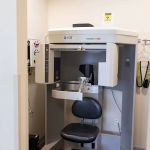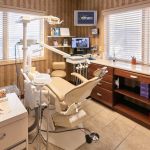Restorative Dentistry for Teeth with Decay Near the Gumline: What You Need to Know
- 1. Understanding Tooth Decay Near the Gumline
- 2. Common Causes of Decay Near the Gumline
- 3. Restorative Dentistry Options for Decay Near the Gumline
- 4. The Impact of Untreated Decay Near the Gumline
- 5. Real-Life Case Studies: Restoring Teeth with Decay Near the Gumline
- 6. How to Prevent Decay Near the Gumline
- 7. Why Choose Restorative Dentistry for Teeth with Decay Near the Gumline
Tooth decay near the gumline is a common dental issue that can lead to serious oral health problems if not addressed promptly. This type of decay occurs when harmful bacteria erode the tooth enamel around the gumline, leading to cavities, discomfort, and potential tooth loss. It's crucial to recognize the early signs of decay near the gumline and seek restorative dentistry options to prevent further damage.
Teeth with decay near the gumline are particularly vulnerable because the gum tissue plays a protective role. When bacteria accumulate along the gumline, it can cause inflammation, gum recession, and, eventually, more severe issues like periodontal disease. Thankfully, restorative dentistry offers various treatments designed to address these problems effectively and restore the health of your teeth.
Common Causes of Decay Near the Gumline
Tooth decay near the gumline can be caused by several factors, often in combination. Poor oral hygiene is one of the primary contributors, as it leads to plaque buildup along the gumline. When plaque isn’t removed through regular brushing and flossing, it hardens into tartar, which can irritate the gums and lead to tooth decay.
Other factors that can contribute to decay near the gumline include smoking, which can weaken gum tissue and increase the risk of gum disease, as well as a diet high in sugar and acidic foods. Additionally, age can be a factor, as the gums tend to recede naturally over time, exposing more of the tooth to potential decay. Other medical conditions such as dry mouth, which reduces the mouth’s ability to wash away food particles and bacteria, can also make the gums and teeth more susceptible to decay.
Restorative Dentistry Options for Decay Near the Gumline
Restorative dentistry offers several effective treatment options for addressing decay near the gumline. One of the most common treatments is dental fillings. If the decay has created a cavity near the gumline, your dentist may use materials like composite resin, porcelain, or silver amalgam to fill the cavity and restore the tooth’s function and appearance.
For more extensive decay, a dental crown may be necessary. Crowns are custom-made to fit over the affected tooth, providing a protective barrier that restores its shape and strength. Crowns are often used when the decay has weakened the tooth to the point where a filling would not be sufficient. In some cases, root canal therapy might be required if the decay has reached the pulp of the tooth and caused infection.
For patients with gum recession that exposes the roots of the teeth, gum grafting may be performed in conjunction with restorative dentistry to promote healing and protect the teeth from further damage. Your dentist will work with you to determine the most appropriate treatment based on the severity of the decay and your overall oral health.
The Impact of Untreated Decay Near the Gumline
If left untreated, decay near the gumline can lead to several serious dental and health problems. As the decay progresses, it can cause the tooth to become severely weakened, which increases the risk of tooth fracture or loss. Additionally, untreated decay can lead to gum disease, which can cause further gum recession, inflammation, and even tooth loss.
Moreover, the spread of bacteria from decay near the gumline can lead to systemic health issues, such as cardiovascular disease and diabetes, due to the connection between oral health and overall health. This makes it all the more important to seek restorative dental treatments as soon as possible to prevent more severe health consequences.
Real-Life Case Studies: Restoring Teeth with Decay Near the Gumline
Consider the case of Sarah, a 45-year-old patient who had been experiencing sensitivity and discomfort around her gumline for several months. After a dental check-up, it was discovered that she had significant decay near her lower front teeth. Her dentist recommended a combination of fillings and crowns to restore the affected teeth and prevent further decay.
Through restorative dentistry, Sarah was able to regain the functionality and appearance of her teeth. She also received gum grafting to address her gum recession, which further helped protect her teeth from future issues. Sarah was able to return to a pain-free life and has maintained good oral hygiene to prevent further decay.
How to Prevent Decay Near the Gumline
Preventing decay near the gumline starts with good oral hygiene practices. Brushing your teeth at least twice a day with fluoride toothpaste and flossing daily are essential habits for removing plaque and food particles from the gumline. Regular dental check-ups, typically every six months, are also crucial for detecting early signs of decay and preventing further damage.
In addition to maintaining good hygiene, you can help prevent decay near the gumline by eating a balanced diet that is low in sugar and acidic foods. Drinking plenty of water throughout the day helps keep your mouth hydrated and flushes away bacteria. Avoiding tobacco products is also vital for protecting your gums and preventing decay.
Why Choose Restorative Dentistry for Teeth with Decay Near the Gumline
Restorative dentistry offers the most effective and reliable solutions for treating decay near the gumline. By opting for restorative treatments, you not only restore the appearance and function of your teeth, but you also improve your oral health and reduce the risk of future complications. Whether you need fillings, crowns, or other treatments, restorative dentistry provides a comprehensive approach to dental care that addresses both the immediate issue and long-term oral health.
If you’re struggling with decay near the gumline, don't wait until the problem worsens. Contact your dentist today to discuss the restorative dentistry options that will help protect your teeth and restore your smile. With the right care, you can maintain a healthy, beautiful smile for years to come.







 Yonkers Dental Implants Center4.0 (63 review)
Yonkers Dental Implants Center4.0 (63 review) Gardena Dental Care4.0 (416 review)
Gardena Dental Care4.0 (416 review) Apple Grove Dental4.0 (536 review)
Apple Grove Dental4.0 (536 review) Arlington Family & Cosmetic Dental Associates4.0 (121 review)
Arlington Family & Cosmetic Dental Associates4.0 (121 review) Eastern Dental3.0 (336 review)
Eastern Dental3.0 (336 review) Small Smiles LLC4.0 (58 review)
Small Smiles LLC4.0 (58 review) The Importance of Oral Health Education During Pregnancy for a Healthy Pregnancy
The Importance of Oral Health Education During Pregnancy for a Healthy Pregnancy Best Tips for Brushing Your Teeth Properly for Healthy Gums: Essential Techniques for Oral Health
Best Tips for Brushing Your Teeth Properly for Healthy Gums: Essential Techniques for Oral Health Why Skipping Dental Checkups Can Lead to Bigger Oral Health Problems
Why Skipping Dental Checkups Can Lead to Bigger Oral Health Problems Advantages of Porcelain Dental Restorations
Advantages of Porcelain Dental Restorations How Can Diabetes Cause Tooth and Gum Problems? Preventing and Managing Oral Health Issues
How Can Diabetes Cause Tooth and Gum Problems? Preventing and Managing Oral Health Issues Healthy Habits for Promoting Good Oral Health and Hygiene: Tips for a Healthy Smile
Healthy Habits for Promoting Good Oral Health and Hygiene: Tips for a Healthy Smile